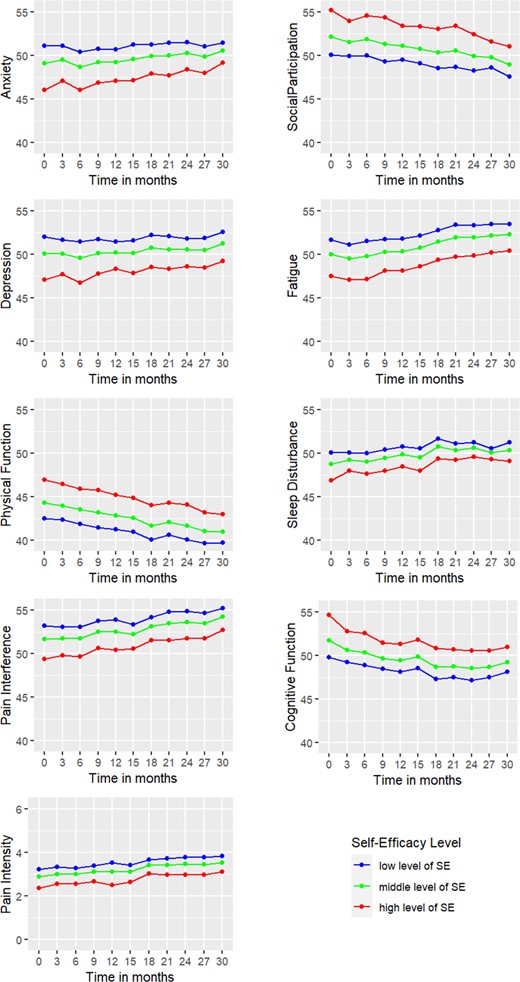-
PDF
- Split View
-
Views
-
Cite
Cite
Krister Cromm, Ngoc Pham, Hanna Jaha, Anna Schappert, Gregor Liegl, Kathrin I Fischer, Felix Fischer, Matthias Rose, #376 Self-efficacy, social support and hemodiafiltration are independently associated with better Self-Reported Health Status over time, Nephrology Dialysis Transplantation, Volume 39, Issue Supplement_1, May 2024, gfae069–0714–376, https://doi.org/10.1093/ndt/gfae069.714
Close - Share Icon Share
Abstract
Patients with kidney disease receiving dialysis are a highly vulnerable population. Psychosocial determinants of Self-Efficacy (SE) and Social Support (SS) have been suggested as potentially important outcomes for people with end stage kidney disease. We investigated whether these variables could explain differences in Health-Related Quality of Life (HRQL) outcome domains over time independently or in interaction with treatment modality of high-flux hemodialysis (HD) versus high-dose hemodiafiltration (HDF).
HRQL in 1264 participants from the international multi-centre, prospective, randomized, open label, controlled CONVINCE trial were assessed, using screening and quarterly follow-up data up to 24 months. Measures included the MOS Social Support Scale, General Self-Efficacy Scale, and PROMIS short forms for fatigue, physical function, pain interference and intensity, sleep disturbance, anxiety, cognitive function, depression, ability to participate in social roles. SE, SS and interactions with modality were included as independent variables and HRQL domains as dependent variables in a linear mixed effects model with random intercept and slope for SE and SS.
Participants were 20-92 (M=62.33, SD=13.50) years old, 62.9% were male. Linear mixed effect regression models showed significant main effects for self-efficacy (β = −0.15-1.09, all p < .0001) on all HRQL domains. Significant SE × time interactions were found for all variables (β = −0.02-0.04, all p < .01) but pain intensity. Main effects for SS were found for cognition (β = 0.31, p = .00) and sleep disturbance (β = −0.21, p = .00). A significant SS × time interaction was found for anxiety (β = 0.01, p = .02) and sleep disturbance (β = 0.02, p = .00).
Plots for these associations can be found in Figs 1 and 2. Marginal means were plotted and 25%, 50% and 75% quantiles were used to separate the different levels of SE and SS.
There were no significant interactions between treatment modality (HDF vs. HD) and SE/SS.
Our results indicate that higher SE and better SS are independently associated with higher HRQL of dialysis patients over time, showing no significant interactions with HDF. SE had the largest effects on HRQL. This bears the chance to develop targeted psychosocial interventions to improve health outcomes when introducing new therapy options for patients. However, patients achieving higher HRQL over the course of the treatment may also experience higher SE and SS over time. Future research should include longitudinal assessments on these psychosocial determinants to evaluate their effect further.

Profile plots showing the associations between different levels of Self-Efficacy and HRQL domains over time, only significant associations are plotted.

Profile plots showing the associations between different levels of Social Support and HRQL domains over time, only significant associations are plotted.
- anxiety
- hemodialysis
- kidney diseases
- kidney failure, chronic
- fatigue
- cognition
- depressive disorders
- dyssomnias
- follow-up
- health status
- hemodiafiltration
- mental processes
- pain
- self efficacy
- sleep disorders
- social support
- psychosocial intervention
- health outcomes
- health-related quality of life
- cognitive ability
- physical function
- self-report
- vulnerable populations





Comments